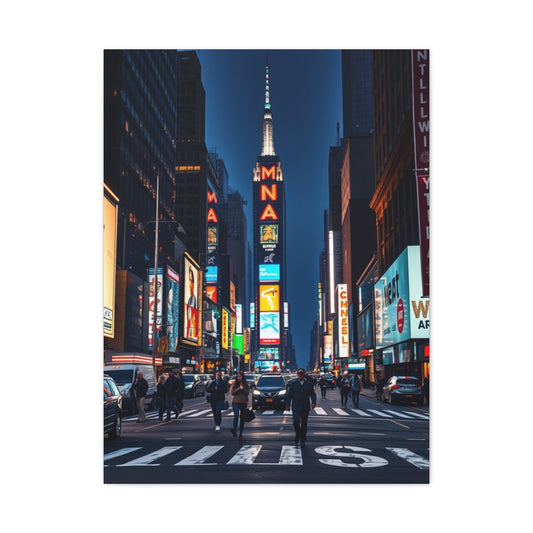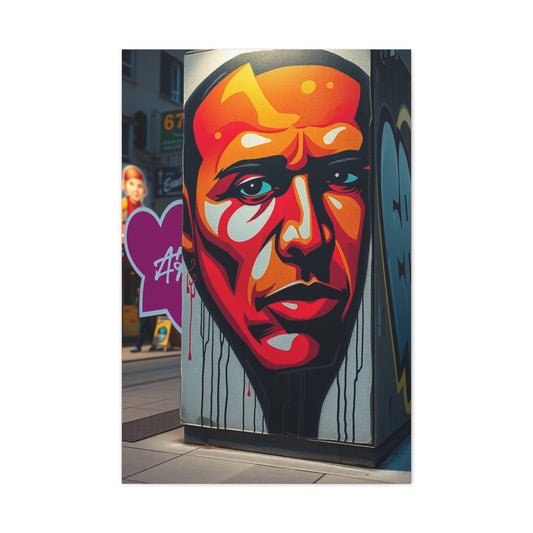A girl’s bedroom is more than just a place to rest; it is a sanctuary where creativity, personality, and comfort converge. The choice of colours within this personal space significantly influences the ambiance, mood, and functionality of the room. Modern design principles advocate for colour schemes that not only reflect aesthetic preferences but also support emotional well-being and intellectual stimulation. Contemporary girls’ bedroom designs now integrate innovative palettes, blending traditional hues with bold accents, resulting in spaces that are both inviting and sophisticated. Selecting the right combination of shades requires careful consideration of factors such as lighting, furniture, textures, and the occupant’s age, ensuring the room evolves gracefully over time.
Colour psychology plays a crucial role in determining the ideal palette. Hues can evoke calmness, energy, creativity, or focus, making them essential components in shaping a girl’s daily experience within her room. For example, subtle pastels can foster relaxation and serenity, while brighter tones inspire liveliness and imagination. When planning a colour scheme, it is important to balance vibrancy with harmony, creating a cohesive environment that supports both personal expression and functional utility. The modern approach to bedroom colour design embraces versatility, allowing for customization through furniture, accessories, and accent pieces without overwhelming the overall aesthetic.
Historical Background
The concept of bedroom design and colour application has undergone remarkable evolution over centuries. In earlier times, bedrooms were considered primarily functional spaces, with minimal attention paid to aesthetics. Colours were chosen based on availability, social status, and regional traditions rather than personal taste. For young girls, bedrooms often reflected societal norms, with predominant use of soft pinks, whites, or floral patterns, emphasizing femininity and delicacy. During the Victorian era, decorative elements such as wallpaper, ornate furniture, and pastel draperies reinforced the notion of gender-specific interiors, subtly guiding the behaviour and identity of young girls within these curated spaces.
With the advent of the 20th century and the rise of modernist design philosophies, a shift occurred towards minimalism, practicality, and experimentation with colour. Designers began exploring new pigments, textures, and materials, encouraging individuality and expression within private spaces. Teenage girls’ bedrooms became more than functional retreats, transforming into platforms for personal exploration, creativity, and identity formation. The introduction of modular furniture, wall decals, and dynamic colour combinations marked a departure from traditional stereotypes, allowing bedrooms to reflect diverse lifestyles and preferences. The historical evolution of bedroom aesthetics underscores the importance of adaptive design, illustrating how contemporary colour schemes are informed by both tradition and innovation.
Core Concepts and Foundations
Modern girls’ bedroom colour schemes rely on several foundational concepts that guide successful design. The first principle is harmony, ensuring that colours complement one another rather than clash. Harmonious palettes often involve a combination of analogous shades, where colours are adjacent on the colour wheel, or complementary contrasts that create visual interest without causing discord. For instance, pairing soft lilac with muted turquoise introduces a serene yet playful atmosphere, demonstrating how balance can be achieved through thoughtful selection of tones.
The second concept is functionality. Bedroom colours influence not only the visual appeal but also the psychological and practical experience of the room. Light, airy hues can make compact spaces feel expansive, while darker shades can introduce intimacy and warmth. Designers often incorporate flexible schemes that allow for seasonal adjustments or evolving preferences as the occupant matures. This approach ensures the bedroom remains relevant, versatile, and adaptable to changing lifestyles.
Another essential foundation is accentuation. Accent colours serve to highlight specific areas, furniture, or decor elements, adding depth and dimension to the overall design. For example, a pop of vibrant yellow against neutral walls can energize the space without overwhelming it, while subtle hints of teal or aqua in furnishings create layers of visual texture and complexity. Effective use of accents transforms the room from a static environment into a dynamic, engaging space.
Light interaction forms another critical pillar in designing colour schemes. Natural and artificial lighting affects the perception of colour, influencing how shades appear at different times of the day. Designers must consider window placement, artificial light sources, and reflective surfaces to ensure that the chosen palette maintains its intended effect under varying conditions. Integrating these elements requires a nuanced understanding of chromatic dynamics, allowing the bedroom to radiate warmth, calm, or vibrancy as desired.
Texture and material synergy further enhances the impact of colour. Matte walls, glossy furniture, and soft textiles interact differently with light and shade, affecting the perception of colour intensity and depth. For instance, pairing smooth lacquered surfaces with plush bedding in complementary tones can enrich the visual narrative of a girl’s bedroom, providing a multisensory experience that combines aesthetics with tactile comfort.
Incorporating these foundational principles ensures that bedroom colour schemes move beyond mere decoration, transforming spaces into holistic environments that nurture imagination, relaxation, and personal growth. Modern designs encourage experimentation, blending classic tones with contemporary accents, resulting in bedrooms that are both stylish and timeless. Understanding these core concepts allows designers and homeowners to make informed choices, creating personalized interiors that resonate with the occupant’s individuality and lifestyle.
Modern Colour Combinations for Girls’ Bedrooms
Designing a modern girls’ bedroom begins with selecting harmonious and vibrant colour combinations that evoke both elegance and energy. Contemporary interiors are moving beyond traditional stereotypes, incorporating a diverse spectrum of shades to create spaces that are dynamic, versatile, and deeply personalized. Combinations such as teal and pink, pastel lilac with muted turquoise, or soothing aqua with ivory highlights exemplify this trend. Teal paired with pink achieves a delicate equilibrium between warm and cool tones, offering sophistication without overwhelming the senses. Pastel lilac harmonized with turquoise introduces a gentle vibrancy, creating a sense of serenity while encouraging creativity. Soothing aqua integrated with ivory or soft gray provides a calming retreat that enhances both relaxation and visual appeal.
Accent colours play a significant role in modern bedroom design. Small infusions of brighter shades, such as golden yellow, coral, or magenta, can energize neutral backgrounds, drawing attention to specific décor elements or focal points. These accents provide layers of depth and visual intrigue, transforming a standard bedroom into a lively, engaging space. By carefully selecting accent hues, designers can create balance, ensuring that the vibrancy of colour complements the overall aesthetic rather than clashing with it.
Monochromatic schemes have also gained popularity in contemporary bedrooms. Variations of a single colour, such as multiple shades of blue or gray, produce a sophisticated, cohesive appearance while maintaining subtlety. These schemes allow for the integration of textured materials, patterns, and furnishings, which add dimension and character to the room without introducing excessive visual complexity. Monochromatic designs create harmony and provide an adaptable backdrop for evolving tastes, particularly as young girls grow and their preferences change.
Psychological Effects of Bedroom Colours
Colours in a bedroom are not merely decorative; they influence mood, behavior, and cognitive functions. Soft pastels such as powder blue, blush pink, or pale lilac foster tranquility, making them ideal for areas dedicated to rest, reflection, or study. These shades can reduce stress and promote calmness, creating an environment conducive to sleep and relaxation. In contrast, brighter colours such as yellow, coral, or turquoise stimulate energy, creativity, and enthusiasm, which are suitable for play areas or spaces intended for artistic activities.
The choice of colour also impacts the perception of space. Lighter tones reflect more light, making compact rooms appear larger and more open, while darker or richer shades create intimacy and a sense of enclosure. Understanding the psychological resonance of each hue allows designers to manipulate space effectively, balancing visual appeal with functional requirements. Integrating complementary shades or contrasting accents enhances both emotional and spatial dimensions, ensuring that the bedroom remains inviting, stimulating, and comfortable.
Practical Integration of Colours
Incorporating modern colour schemes into a bedroom involves strategic planning that considers furniture, décor, textiles, and lighting. Walls, ceilings, and flooring establish the foundational palette, while furnishings, bedding, curtains, and accessories provide opportunities to introduce complementary or accent hues. For example, a soft lilac wall can be paired with a teal bed frame and golden yellow cushions, creating a layered and harmonious composition. Textured rugs, curtains, or upholstered furniture add tactile richness, enhancing both the visual and sensory experience of the room.
Lighting is integral to the successful implementation of colour schemes. Natural light affects how shades are perceived throughout the day, highlighting subtle undertones or altering the vibrancy of hues. Artificial lighting, including ceiling lights, lamps, or wall fixtures, must be carefully selected to complement the colour palette. Warm lighting enhances earthy and pastel tones, while cool lighting accentuates blues, greens, and other cooler shades. Thoughtful lighting ensures that the bedroom maintains its intended ambiance and aesthetic appeal under various conditions.
Storage solutions and modular furniture also influence the effectiveness of colour integration. Neutral or monochrome furniture provides a versatile base, allowing accent colours to stand out without creating visual clutter. Built-in shelves, cabinets, and multifunctional units can incorporate coloured elements through drawer fronts, handles, or decorative panels, blending functionality with style. This approach ensures that the bedroom remains organized and aesthetically pleasing, supporting both practical needs and personal expression.
Creative Approaches to Colour Layering
Layering colours involves combining shades in a manner that adds depth, contrast, and visual interest. One effective strategy is to blend analogous colours, which are adjacent on the colour spectrum, to create harmony and cohesion. For instance, combining mint green, soft teal, and pale aqua produces a tranquil yet dynamic environment. Complementary colour pairings, such as coral and turquoise or lilac and golden yellow, create vibrancy and highlight focal areas. By layering colours thoughtfully, designers can achieve a multidimensional effect that elevates the overall design without overwhelming the senses.
Incorporating patterns, textures, and gradients enhances the layered effect. Striped or geometric wallpapers, patterned textiles, and gradient paint finishes can reinforce the chosen palette while introducing visual complexity. These elements break the monotony of solid colours, providing subtle movement and rhythm within the room. Additionally, metallic or reflective accents, such as gold, silver, or copper, interact with the surrounding shades, creating shimmering highlights that add sophistication and charm.
Adapting Colour Schemes Over Time
Girls’ bedrooms are evolving spaces that must adapt as the occupant grows. Modern design encourages flexibility, allowing colour schemes to transition seamlessly from childhood to adolescence and beyond. Neutral bases, such as soft gray, beige, or white, provide long-term stability, while accent colours can be updated periodically to reflect changing tastes or trends. Bedding, curtains, wall art, and small furnishings offer accessible avenues for refreshing the palette without requiring extensive renovation.
Seasonal considerations also influence colour adaptation. Lighter, cooler tones are often preferred in warmer months, providing a sense of freshness and openness, while warmer shades, such as burnt orange or deep teal, create coziness during colder seasons. Adjustable textiles and interchangeable décor elements enable dynamic updates, ensuring that the bedroom remains visually engaging and comfortable throughout the year.
Innovative Trends in Girls’ Bedroom Colours
Current trends emphasize creativity, personalization, and multidimensional design. Ombre walls, where colours transition gradually from light to dark, create a striking visual impact while maintaining subtlety. Gradient murals, abstract patterns, and artistic wall treatments allow for expressive, unique interiors. Interactive elements such as chalkboard walls or magnetic panels provide functional spaces that also incorporate colour dynamically, encouraging creativity and personal engagement within the room.
Sustainable and eco-conscious design is influencing colour choices as well. Non-toxic paints, natural dyes, and recycled materials support environmental responsibility while offering soft, authentic hues that enhance the bedroom’s atmosphere. Botanical inspirations, including shades of green, earthy browns, and floral pastels, introduce a sense of nature and calmness, creating a rejuvenating retreat.
Personalized accents remain central to modern design. Incorporating favourite colours, themed elements, or bespoke decorations allows each bedroom to reflect the occupant’s identity and preferences. This approach blends aesthetic coherence with individuality, ensuring that the space is functional, visually pleasing, and emotionally resonant.
Spatial Dynamics and Colour Interaction
The perception of colour is closely tied to spatial dynamics. Room dimensions, ceiling height, and furniture placement interact with colour to affect overall visual impact. Vertical stripes or light tones on walls can elongate the appearance of a room, while darker shades on ceilings add a sense of intimacy and depth. Colour can be used to delineate zones within the bedroom, creating distinct areas for study, rest, or recreation without the need for physical partitions.
Mirrors and reflective surfaces amplify the impact of colour, dispersing light and enhancing the perception of space. Strategic placement of mirrors opposite windows or near accent walls can intensify brightness and colour vibrancy. Glass or metallic décor items further interact with the colour palette, producing subtle reflections and highlights that enrich the overall aesthetic.
Textures, Materials, and Colour Synergy
Texture plays a pivotal role in complementing colour schemes. Soft fabrics such as velvet, cotton, or faux fur harmonize with pastel or muted tones, creating warmth and comfort. Smooth, glossy surfaces highlight deeper, saturated shades, while matte finishes provide understated elegance. Layering materials with contrasting textures adds dimension, making colours appear more dynamic and multidimensional. Wooden elements, woven textiles, and natural fibers integrate seamlessly with various palettes, enhancing both visual and tactile experience.
Material choices influence how colour is perceived. Lacquered furniture, ceramic décor, and glass accents interact with light differently than soft furnishings or painted walls, introducing nuanced shifts in hue and tone. Understanding these interactions allows designers to optimize the impact of colour while maintaining aesthetic balance.
Exploring Vibrant Colour Palettes for Girls’ Bedrooms
Designing a girls’ bedroom requires careful consideration of colour palettes that combine vibrancy, harmony, and personality. Modern interiors encourage experimentation with shades that evoke energy and creativity while maintaining cohesion and elegance. Popular combinations include teal and pink, coral with turquoise, soft lilac with muted mint, and soothing aqua with ivory highlights. These pairings allow bedrooms to reflect individuality while maintaining balance, transforming simple spaces into lively and immersive environments. Teal and pink juxtapose cool and warm tones, introducing sophistication without compromising playfulness. Coral and turquoise create a vivid contrast that energizes the room, while lilac and mint provide serenity with subtle depth.
Colour layering is a key approach in contemporary design, enabling the creation of multidimensional interiors. By combining analogous shades or complementary contrasts, designers can develop spaces that are visually engaging yet harmonious. Accent hues such as golden yellow, magenta, or soft apricot breathe life into neutral backgrounds, drawing attention to specific features without overpowering the composition. Layering through textiles, furniture, and decorative accessories ensures that colour interacts dynamically with the room’s architecture, generating a sophisticated interplay between walls, furnishings, and décor elements.
The Role of Pastels and Muted Tones
Pastel and muted tones have become indispensable in modern girls’ bedrooms. Shades such as powder blue, pale pink, mint green, and soft lilac evoke tranquility and charm while remaining versatile for various interior styles. These colours serve as neutral bases that can be complemented with brighter accents or contrasting textures to enhance visual appeal. Pastels are particularly effective in creating expansive, airy spaces, as they reflect light and soften edges, allowing the room to feel open and welcoming.
Muted tones provide a subtle elegance, ensuring that rooms retain a sense of sophistication even as they evolve with the occupant’s tastes. Incorporating textured fabrics such as velvet cushions, woven rugs, and linen curtains adds depth, transforming muted walls into visually stimulating environments. Designers often pair pastels with metallic accents, soft woods, or glass elements, enhancing luminosity and sophistication while preserving a delicate balance between calmness and vibrancy.
Bright Accents and Statement Colours
Integrating bold or bright colours strategically can infuse energy and excitement into a girl’s bedroom. Shades like lemon yellow, vibrant coral, deep turquoise, or magenta can be applied to accent walls, décor pieces, furniture, or artwork. These statement elements attract attention, creating focal points that enliven the overall aesthetic. Combining bright accents with neutral or pastel backgrounds ensures that the intensity does not become overwhelming, instead enhancing the room’s personality and visual rhythm.
Accent colours also enable personalization, allowing young girls to express their preferences through small, adjustable elements. Cushions, rugs, wall art, and lamps offer flexible avenues for updating colour schemes without extensive renovation. Rotating these accents seasonally or according to changing tastes allows the bedroom to remain fresh, dynamic, and aligned with evolving trends.
Monochromatic and Gradient Designs
Monochromatic schemes continue to gain traction in contemporary girls’ bedroom interiors. Employing multiple shades of a single colour, such as varying tones of blue or gray, creates a cohesive, sophisticated appearance. Monochromatic designs offer flexibility in integrating textures, patterns, and lighting, producing a space that is visually balanced and adaptable. Layering different intensities within the same hue can generate subtle variations, maintaining visual interest without introducing contrasting colours that might disrupt harmony.
Gradient or ombre designs are an innovative extension of monochromatic principles. Walls or accent features that transition gradually from light to dark shades create a sense of depth and movement. This technique adds visual intrigue, producing immersive spaces that are simultaneously soothing and stimulating. Gradient designs also allow for seamless blending of complementary colours, expanding creative possibilities while preserving coherence.
Psychological Influence of Colour Choices
Colour selection profoundly affects emotional well-being, mood, and cognitive responses within a bedroom. Soft shades like powder blue, pale pink, and lilac promote relaxation and focus, making them ideal for reading nooks, study areas, or rest zones. These hues foster calm, reduce stress, and enhance the overall sense of comfort. In contrast, more vivid shades such as bright yellow, coral, or turquoise stimulate creativity and energy, creating a lively atmosphere suitable for play, artistic pursuits, or social interaction.
Understanding colour psychology enables designers to craft spaces that balance emotional impact with aesthetic appeal. Strategically combining calming and stimulating shades allows the room to support diverse activities while maintaining an inviting and harmonious environment. Designers often integrate accent pieces and layered textures to reinforce psychological effects, ensuring that colour selection serves both functional and expressive purposes.
Functional Integration of Colour with Furniture
Selecting and arranging furniture is central to the effectiveness of a bedroom colour scheme. Neutral or monochrome furniture provides a versatile foundation for the integration of accent hues, allowing small pops of colour to stand out without creating visual clutter. Upholstered chairs, beds, and storage units can incorporate complementary shades through textiles or painted surfaces, harmonizing with the broader palette. Multifunctional and modular furniture enables flexible adaptation, allowing colour to evolve alongside personal preferences and room function.
Soft furnishings, including bedding, rugs, and curtains, provide additional layers of colour integration. Patterns and textures complement the primary palette while introducing subtle variations in tone and depth. This layered approach ensures that colour interacts organically with furniture, enhancing both visual and tactile experiences. Thoughtful placement of coloured elements in relation to architectural features such as windows, doors, and alcoves further strengthens spatial harmony.
Lighting Considerations and Colour Perception
Lighting is a decisive factor in the perception and effectiveness of a bedroom colour scheme. Natural light alters the appearance of hues throughout the day, enhancing warmth in morning light or softening tones in afternoon shadows. Artificial lighting, including ceiling fixtures, lamps, and accent lights, must be calibrated to complement the chosen palette. Warm lighting enhances earthy and pastel shades, while cooler light sources accentuate blues, greens, and other cooler tones.
Designers often experiment with reflective and translucent materials to amplify light and colour interaction. Mirrors, glass décor, and metallic finishes distribute light across surfaces, enhancing vibrancy and adding depth to the room. Proper lighting design ensures that the bedroom maintains the intended ambiance under varying conditions, highlighting focal colours while supporting both functionality and aesthetics.
Seasonal Adaptation of Colour Schemes
Modern girls’ bedroom colour schemes benefit from adaptability, allowing spaces to evolve with seasonal shifts. Lighter, cooler shades such as pale aqua, soft lavender, or mint green are ideal for warmer months, imparting a sense of freshness and lightness. Warmer, richer tones like burnt orange, deep teal, or golden yellow create a cozy, inviting environment during colder seasons. Interchangeable textiles, curtains, and décor items facilitate these updates, ensuring that the bedroom remains visually stimulating and seasonally appropriate without extensive renovation.
This adaptability extends to developmental changes as well, allowing the bedroom to transition seamlessly as a child grows into adolescence. Neutral bases combined with modular accent pieces provide a long-lasting framework, while seasonal or interest-based colour updates introduce variety and personal expression over time.
Incorporating Textures and Materials with Colour
Texture and material selection amplify the impact of colour within a bedroom. Soft fabrics such as velvet, cotton, and faux fur complement pastel or muted tones, introducing warmth and comfort. Smooth, polished surfaces highlight deeper, saturated shades, while matte finishes provide understated sophistication. Layering contrasting textures enriches colour perception, creating dynamic, multidimensional interiors.
Natural elements, including wooden furniture, woven textiles, and stone accents, harmonize with both muted and vibrant shades, adding organic depth to the space. Metallic finishes in gold, silver, or copper interact with surrounding colours, introducing subtle highlights and reflective qualities. Understanding these interactions ensures that colour choices produce immersive and harmonious environments that appeal to both sight and touch.
Innovative Approaches to Personalization
Modern bedroom design emphasizes individuality and personal expression. Incorporating favourite colours, thematic décor, or bespoke furniture pieces allows a bedroom to reflect the occupant’s personality. Walls can feature artistic murals, geometric patterns, or gradient effects that transform simple rooms into visually captivating spaces. Interactive elements, such as magnetic boards, chalkboard walls, or customizable shelving, integrate colour dynamically while encouraging creativity.
Personalization extends to subtle, adaptable details. Cushions, throw blankets, and decorative objects provide opportunities to experiment with new colours without altering the foundational palette. This approach ensures a bedroom remains engaging, functional, and emotionally resonant while supporting evolving tastes and developmental needs.
Colour Schemes for Different Personality Types
Designers often align bedroom colour schemes with the personality of the occupant. Calm, introspective individuals may benefit from soothing palettes of soft blue, lilac, or pastel green, fostering relaxation and focus. Energetic and creative personalities may thrive in spaces incorporating coral, turquoise, magenta, or lemon yellow, encouraging imaginative activities and expressive engagement. Balanced personalities may prefer neutral bases with strategic accent colours, achieving harmony and versatility suitable for a wide range of functions.
Colour choice also reflects lifestyle preferences, hobbies, and spatial requirements. For example, a teenage girl who enjoys reading may benefit from calm, muted backgrounds complemented by bright, energizing accents near study areas. A budding artist may prefer a palette that maximizes contrast and vibrancy, supporting creativity and experimentation. Tailoring colour schemes to individual needs enhances both functional usability and personal satisfaction, making the bedroom a true reflection of identity.
Creating Harmonious Girls’ Bedroom Spaces
The foundation of a harmonious girls’ bedroom lies in blending colour, texture, and décor into a cohesive environment. Achieving balance in the selection of shades ensures that the room feels inviting, comfortable, and visually engaging. Modern interior approaches emphasize the interplay of soft pastels with vibrant accents, neutral bases with dynamic pops of colour, and complementary contrasts that define areas within the space. Harmonious designs are not limited to aesthetics; they also enhance mood, encourage creativity, and support relaxation.
When designing a harmonious bedroom, colour must interact seamlessly with furniture, textiles, and decorative elements. A soothing mint green wall, for example, pairs effortlessly with pale lilac furnishings and golden yellow accents, producing a serene yet lively atmosphere. Harmonizing shades throughout bedding, rugs, and curtains reinforces cohesion, while subtle deviations in tone or saturation add depth and interest. Designers often layer colours strategically to create visual flow, guiding the eye naturally across the space and reinforcing a sense of calm.
Innovative Colour Pairings
Exploration of innovative colour pairings has become a hallmark of contemporary girls’ bedroom design. Unconventional combinations such as teal with coral, soft lilac with muted mustard, or aqua with rose gold introduce uniqueness and sophistication. These pairings provide an element of surprise while maintaining balance, ensuring that bold statements integrate seamlessly with the overall scheme. Designers frequently employ colour blocking, gradient walls, and accent features to introduce these combinations without overwhelming the room.
Accent integration is particularly vital when experimenting with rare or luxurious palettes. A small chair upholstered in fuchsia, a lamp in coral, or cushions in chartreuse can invigorate neutral bases while reinforcing personality and character. Layering these accents with textures such as velvet, woven fabrics, or glossy finishes amplifies their visual impact, producing multidimensional interiors that remain elegant and playful.
Enhancing Space with Colour
Colour can transform the perception of space in subtle yet profound ways. Light tones like powder blue, pale aqua, or soft blush create the illusion of expansive dimensions, making compact rooms appear larger and more open. Darker shades such as deep teal, rich plum, or emerald green add intimacy and depth, giving larger rooms a cozy, defined character. Designers leverage these principles to manipulate spatial perception, ensuring that bedrooms feel proportionate, comfortable, and visually balanced.
Strategic use of colour can also delineate functional zones. Study areas, reading nooks, and relaxation corners can be subtly highlighted through shade differentiation, creating defined spaces without introducing physical barriers. This approach enhances both functionality and visual rhythm, allowing rooms to accommodate diverse activities while maintaining a unified aesthetic.
Psychological Impact of Modern Colours
Colours in a bedroom directly influence emotional states and behavioral responses. Soft pastel hues such as blush pink, pale lavender, and powder blue evoke serenity and calmness, supporting restful sleep, focus, and introspection. Brighter colours like lemon yellow, turquoise, and coral stimulate energy, creativity, and enthusiasm, making them ideal for spaces designated for artistic or recreational activities. Understanding the psychological resonance of each shade allows designers to craft environments that foster emotional well-being, cognitive engagement, and personal expression.
Balanced integration of calming and stimulating colours ensures that bedrooms provide a versatile environment, suitable for relaxation, learning, and creative pursuits. Designers may use subdued bases to establish tranquility, layering vivid accents in strategic locations to evoke energy and dynamism. This multidimensional approach transforms the bedroom into a functional, aesthetically engaging sanctuary.
Textural Harmony and Material Integration
Texture is an indispensable tool in enhancing the effect of colour. Smooth, polished surfaces amplify bold and saturated hues, while soft textiles like velvet, cotton, and faux fur complement pastels and muted tones, introducing warmth and tactile richness. Layering varied textures enriches perception, creating rooms that are visually complex yet comfortable and inviting.
Material selection interacts intimately with colour. Wooden furniture, woven baskets, glass accents, and metallic finishes enhance both aesthetic appeal and sensory experience. Reflective surfaces amplify light and highlight colour depth, while natural fibers introduce organic warmth and balance. Thoughtful combination of textures and materials ensures that colour schemes are immersive, harmonious, and enduring, appealing to both sight and touch.
Seasonal and Developmental Adaptability
Modern girls’ bedrooms benefit from adaptable colour schemes that evolve with both seasons and developmental stages. Lighter, cooler shades like pale aqua, mint green, or soft lavender impart freshness during warmer months, while deeper, warmer tones such as mustard, coral, or teal create intimacy and warmth in cooler seasons. Interchangeable décor items, bedding, and accent furniture facilitate these seasonal transitions without requiring major redesign.
Adaptability also extends to personal growth and evolving preferences. Neutral bases provide long-term stability, while accent colours can be modified as tastes change. This flexible approach ensures that bedrooms remain visually stimulating, functional, and aligned with the occupant’s identity across different life stages, offering both aesthetic longevity and personal resonance.
Lighting and Colour Interaction
Lighting profoundly influences the perception and effectiveness of colour. Natural light alters hue intensity, revealing subtle undertones during different times of the day. Artificial lighting, including ceiling lights, lamps, and wall fixtures, must complement the palette, enhancing the visual appeal of the room. Warm lighting enhances earthy tones and pastels, while cool lighting accentuates blues, greens, and other cooler shades.
Reflective and translucent materials, such as mirrors, glass décor, and metallic finishes, amplify light and create dynamic interactions with colour. Properly designed lighting enhances mood, highlights focal points, and ensures that colours retain their intended effect under various conditions. This synergy of light and colour enhances both aesthetic and functional performance, producing immersive and captivating bedroom environments.
Incorporating Personal Preferences
Modern bedroom design emphasizes personalization, allowing girls to express individuality through colour, décor, and layout. Favourite shades, thematic elements, and bespoke furniture pieces create spaces that are both functional and reflective of personality. Walls can feature artistic murals, gradient designs, or abstract patterns, transforming ordinary rooms into engaging and immersive environments.
Interactive elements such as chalkboard walls, magnetic boards, or customizable shelving introduce functional yet dynamic colour integration. Accessories such as cushions, rugs, throws, and small décor items provide flexibility, enabling occupants to refresh and update the colour scheme according to evolving tastes. This approach fosters creativity, ownership, and a sense of belonging within the personal space.
Balancing Monochromatic and Contrasting Schemes
Monochromatic schemes are a powerful tool for achieving cohesion, employing varying shades of a single colour to create depth and sophistication. This approach allows for easy integration of textures, patterns, and furniture while maintaining harmony. Complementary or contrasting colours can be incorporated as accent features, providing energy and focal points without disrupting the balance.
Gradient and ombre techniques offer another avenue for depth and visual interest. Walls or accent features that transition gradually from one shade to another create a sense of flow and dimension. These designs maintain subtlety while introducing vibrancy, allowing creative experimentation without overwhelming the overall aesthetic.
Enhancing Functionality with Colour
Colour enhances not only aesthetics but also functional efficiency within a bedroom. Designating zones through shade differentiation or accent placement ensures clarity and organization. Study areas, play zones, and relaxation corners can be highlighted or subtly demarcated with colour, enabling functional cohesion without physical partitions. Colour also aids in creating visual cues, guiding attention toward important features or activities within the space.
Furniture integration is central to functional colour application. Neutral or monochrome bases allow accent elements to stand out, while multifunctional pieces incorporate colour subtly through textiles, panels, or finishes. Layering furniture with complementary hues strengthens cohesion, ensuring that colour contributes to both utility and aesthetic appeal.
Rare and Unique Colour Combinations
Contemporary design encourages exploration of unusual colour pairings to create distinctive, memorable bedrooms. Combinations such as lilac with mustard, aqua with rose gold, teal with coral, and blush pink with muted emerald introduce originality while maintaining harmony. These rare pairings are enhanced by careful layering of textures, metallic finishes, and reflective surfaces, producing luxurious and multidimensional interiors.
Strategic placement of rare colours in accent furniture, decorative items, or focal walls ensures vibrancy without overwhelming the room. This approach supports individuality, personal expression, and creativity, offering a bedroom that is as functional as it is visually captivating.
Integrating Trends and Innovations
Modern bedroom design continually evolves, embracing innovative materials, textures, and colour techniques. Ombre walls, abstract murals, geometric patterns, and gradient finishes introduce creativity while maintaining balance. Sustainable materials and non-toxic paints provide environmentally conscious solutions without compromising aesthetic quality. Botanical inspirations, metallic accents, and natural textures add sophistication, enhancing colour perception while creating immersive, engaging spaces.
Personalized elements remain at the forefront of contemporary design. Occupants can integrate favourite colours, hobbies, or thematic décor, ensuring that bedrooms remain reflective of identity and lifestyle. This integration of trends and innovations ensures that girls’ bedrooms are functional, aesthetically pleasing, and adaptable over time.
Contemporary Colour Inspirations for Girls’ Bedrooms
Designing a contemporary girls’ bedroom requires a deep understanding of colour dynamics and spatial harmony. Modern interiors increasingly favor palettes that merge vibrancy with subtlety, creating spaces that are playful, elegant, and functional. Innovative combinations such as teal with coral, lilac with mint, or soft aqua with ivory highlight a balance between energy and tranquility. These pairings allow bedrooms to be lively yet restful, dynamic yet soothing.
Modern design emphasizes not just the choice of colours but their arrangement and interaction with surrounding elements. Layering shades through wall finishes, furniture, textiles, and décor produces visual depth, ensuring the room feels cohesive. Accents in golden yellow, muted magenta, or coral enhance primary palettes, producing moments of delight without overwhelming the senses. This approach ensures that every corner of the bedroom contributes to the overall aesthetic while reflecting individuality.
Pastel and Muted Tones for Serenity
Pastel and muted tones remain integral to girls’ bedrooms for their calming and versatile qualities. Soft blues, blush pinks, pale lavenders, and mint greens evoke serenity, creating spaces conducive to rest, study, and reflection. These tones work as neutral foundations, allowing accent colours to shine without clashing. The combination of soft shades with textured fabrics, such as velvet cushions or woven throws, introduces dimension and tactile richness, making the room visually engaging and cozy.
Designers frequently pair pastels with subtle metallic or glass accents, amplifying light and adding sophistication. This method enhances the serenity of muted tones while introducing layers of elegance. Pastels also function well in small rooms, reflecting light and visually expanding space, creating an open, airy environment that feels welcoming and tranquil.
Vibrant Accents and Statement Features
While pastels provide calm, vibrant accents inject energy and personality into a bedroom. Lemon yellow, coral, turquoise, and magenta applied strategically to furniture, décor, or textiles draw attention and create focal points. Accent walls, upholstered chairs, and patterned cushions enliven the space, ensuring it feels dynamic without being chaotic.
Bright elements are particularly effective in modular or multifunctional furniture. Cushions, rugs, and wall décor allow flexible updates, ensuring the bedroom evolves with changing tastes. Statement features also enable personalization, giving the occupant the ability to express identity, creativity, and interests through carefully chosen colours that resonate with their personality.
Monochromatic and Gradient Techniques
Monochromatic colour schemes provide cohesion and sophistication by utilizing variations of a single hue. Shades of blue, gray, or green layered through walls, furniture, and textiles create harmony and depth. These designs are versatile, allowing for integration of textures and patterns without introducing visual conflict. Complementary accents in contrasting or metallic tones provide energy and highlight focal areas, balancing calmness with vibrancy.
Gradient or ombre applications introduce visual intrigue, with colours transitioning subtly from light to dark. Walls, curtains, and textiles featuring gradual shifts in tone enhance dimension and movement, producing immersive spaces that engage both sight and touch. This technique allows bedrooms to maintain understated elegance while showcasing creativity and modernity.
Colour Psychology and Emotional Influence
The psychological impact of colour on mood, behavior, and cognitive function is critical in bedroom design. Soft pastels like powder blue, blush pink, and pale lavender encourage relaxation, focus, and emotional well-being. Bright shades such as turquoise, coral, or lemon yellow stimulate creativity, energy, and enthusiasm, suitable for artistic and recreational activities.
Modern design balances these effects by combining soothing foundations with strategically placed energetic accents. This multidimensional approach ensures bedrooms cater to diverse needs, supporting study, play, rest, and creative expression. Thoughtful colour application creates an environment that is emotionally supportive and visually cohesive, enhancing both comfort and functionality.
Harmonizing Textures with Colour
Texture enhances the perception of colour, introducing depth, tactility, and richness. Smooth finishes amplify saturated shades, while soft fabrics like velvet, linen, and faux fur complement pastel and muted tones. Layering textures such as rugs, cushions, curtains, and upholstery adds complexity, producing interiors that are engaging and comfortable.
Natural materials, including wood, wicker, and stone, harmonize with modern palettes, creating warmth and authenticity. Metallic accents in gold, silver, or copper interact with colours to introduce reflective highlights, enhancing vibrancy and sophistication. Understanding the synergy between texture, material, and colour ensures bedrooms remain multidimensional, immersive, and visually captivating.
Seasonal and Developmental Adaptability
Bedrooms designed with adaptability in mind allow seamless transitions across seasons and developmental stages. Lighter shades like mint green, pale aqua, and soft lavender provide freshness during spring and summer, while warmer tones such as mustard, burnt orange, and deep teal create intimacy and comfort in autumn and winter. Interchangeable bedding, curtains, and décor facilitate these updates without major renovation, maintaining aesthetic continuity and functional comfort.
As children grow, their preferences evolve. Neutral bases combined with modular accent elements allow for flexible updates, ensuring the room remains visually engaging and aligned with personal taste over time. Seasonal and developmental adaptability supports long-term usability, fostering spaces that evolve with the occupant.
Lighting Integration and Colour Perception
Lighting is integral to how colours are perceived and experienced. Natural light alters the appearance of shades throughout the day, revealing subtle undertones and variations. Artificial lighting, including ceiling lights, lamps, and wall fixtures, must complement the chosen palette. Warm lighting enhances pastels and earthy tones, while cool lighting highlights blues, greens, and other cooler shades.
Reflective and translucent elements, such as mirrors, glass décor, and metallic finishes, amplify light and interact dynamically with colour. Proper lighting placement enhances mood, accentuates focal points, and ensures that colours retain their intended effect under varying conditions. The interplay of light and colour produces spaces that are visually immersive and emotionally supportive.
Personalization and Thematic Elements
Personalized décor elevates bedroom design by reflecting individuality and fostering creativity. Thematic colour schemes, bespoke furniture, and custom wall art allow occupants to express personality and interests. Murals, gradient walls, and abstract patterns transform ordinary rooms into visually captivating environments.
Interactive elements such as chalkboard walls, magnetic boards, or customizable shelves enable functional yet dynamic use of colour. Accessories such as cushions, throws, and decorative objects allow for continuous updates and adaptation, supporting evolving tastes and personal expression. This approach transforms bedrooms into living spaces that are both functional and emotionally resonant.
Integrating Rare and Unique Colour Combinations
Contemporary design encourages experimentation with rare and unique colour pairings. Lilac with mustard, aqua with rose gold, teal with coral, and blush pink with muted emerald produce distinctive and sophisticated interiors. Careful placement of these shades in accent furniture, décor, or feature walls ensures vibrancy without overwhelming the overall design.
Combining rare colours with textures, reflective finishes, and layered textiles creates luxurious, multidimensional bedrooms. Strategic integration of these unique combinations encourages creativity, individuality, and aesthetic refinement, ensuring that spaces are memorable, functional, and visually captivating.
Multifunctional Colour Applications
Colour enhances functionality within modern girls’ bedrooms. Differentiating zones through shades, gradients, or accents clarifies areas designated for study, play, or relaxation. Colour cues guide focus, delineate spaces, and organize the room intuitively. Neutral bases with vibrant accents allow multifunctional furniture to integrate seamlessly, combining practicality with aesthetic appeal.
Layering colour through textiles, décor, and furniture ensures cohesion while supporting multiple functions. This strategy enhances usability, encourages creativity, and maintains a visually harmonious environment, demonstrating that colour is not merely decorative but central to both form and function.
Advanced Trends in Colour and Design
Modern girls’ bedroom design embraces innovation, blending traditional colour principles with avant-garde techniques. Ombre walls, geometric patterns, metallic accents, and botanical inspirations introduce originality while maintaining harmony. Sustainable materials, non-toxic paints, and natural fibres contribute to ethical, eco-conscious design, enhancing the authenticity of the palette.
Trends also emphasize adaptability and personalization. Occupants can integrate favourite colours, hobbies, or thematic décor, ensuring bedrooms evolve with individual identity and lifestyle. Combining innovative finishes, textured layering, and personalized elements produces environments that are immersive, elegant, and enduringly engaging.
Integrating Multifunctional Design in Girls’ Bedrooms
Modern girls’ bedrooms increasingly embrace multifunctional design, where colour, furniture, and décor work in tandem to create adaptable, efficient spaces. Beds with storage, foldable desks, and modular shelves allow seamless transitions between study, rest, and play areas. Colour integration in these multifunctional elements enhances the visual appeal, ensuring practicality does not compromise aesthetic quality. Muted tones paired with vibrant accents draw attention to key functional zones, maintaining cohesion while supporting diverse activities.
Colour coding within multifunctional spaces also aids organization. Study corners highlighted with calming blues or soft greens encourage focus, while play areas with coral, magenta, or lemon yellow stimulate energy and creativity. Neutral bases like ivory, pale gray, or pastel pink unify the room, providing a canvas for dynamic accents. This thoughtful application ensures that bedrooms evolve with the occupant’s needs without requiring extensive redesign.
Advanced Colour Layering Techniques
Layering colour is a sophisticated approach to adding depth and personality to a bedroom. Walls, furniture, textiles, and decorative elements can each carry varying shades of the same colour or complementary hues, producing multidimensional interiors. Subtle transitions from muted pastels to vibrant accents create visual intrigue while maintaining harmony.
Textures enhance layering, as smooth finishes, woven fabrics, metallic accents, and glass details interact with colour, producing nuanced effects. For example, a soft mint wall paired with velvet cushions in lilac and metallic gold accents offers both tactile richness and visual complexity. Such layered compositions are particularly effective in modern girls’ bedrooms, as they allow colour to be both expressive and cohesive, reflecting personality while supporting practical use.
Seasonal Colour Adaptation Strategies
Designing bedrooms with seasonal adaptability ensures long-term satisfaction and visual dynamism. Cooler shades like aqua, powder blue, and pale lavender evoke freshness and brightness in spring and summer, while warmer tones such as mustard, burnt orange, and deep teal create intimacy during autumn and winter. Interchangeable textiles, such as cushions, throws, and curtains, allow effortless seasonal updates.
Lighting further enhances seasonal adaptability. Warm artificial light intensifies cozy winter hues, while natural daylight amplifies pastel tones in warmer months. Colour adaptation also extends to personal growth, as bedrooms designed with flexible palettes can evolve alongside the occupant, accommodating shifting preferences and developmental stages seamlessly.
Balancing Personalization with Cohesion
A successful bedroom balances personal expression with cohesive design. Allowing young occupants to select favourite colours, themed décor, or bespoke furniture ensures the space feels personal and engaging. Murals, gradient walls, and interactive elements such as chalkboard or magnetic surfaces provide dynamic opportunities for creativity without compromising overall harmony.
Accessories like cushions, rugs, and decorative objects offer further personalization. By rotating these elements, the occupant can refresh the bedroom periodically, keeping it aligned with changing tastes and interests. This balance between personalization and cohesion ensures the room remains functional, aesthetically pleasing, and emotionally resonant.
Rare and Luxurious Colour Combinations
Modern girls’ bedrooms increasingly feature rare and luxurious colour pairings to create memorable and sophisticated interiors. Combinations such as blush pink with muted emerald, lilac with mustard, teal with coral, or aqua with rose gold introduce originality while preserving harmony. Careful placement in accent furniture, wall décor, or textiles ensures vibrancy without overwhelming the room.
Integrating rare colours with metallic finishes, reflective surfaces, and varied textures adds richness and dimension. These combinations transform ordinary bedrooms into elegant, multidimensional spaces that are both functional and expressive. Occupants experience a sense of luxury and individuality, while the room remains adaptable for evolving needs.
Monochromatic and Gradient Innovations
Monochromatic and gradient colour techniques continue to inspire contemporary bedroom design. Layering multiple shades of a single hue, such as varying blues, grays, or greens, provides cohesion while allowing for depth and sophistication. Gradient walls, textiles, or accent features offer subtle transitions, creating movement and visual interest without disrupting harmony.
These approaches are particularly effective when paired with complementary accent colours or metallic highlights. For example, a soft aqua gradient wall combined with coral cushions and golden décor creates a balanced yet dynamic environment. This method allows creativity and individuality to flourish within a cohesive design framework.
Psychological and Functional Considerations
Colour choice directly impacts mood, cognitive function, and emotional well-being. Soft, muted shades promote relaxation, concentration, and restful sleep, while vibrant colours stimulate energy, creativity, and engagement. Designers strategically combine these effects to ensure bedrooms support multiple activities, from study to leisure to social interaction.
Functional colour placement can delineate zones within the room, guiding focus and organizing space intuitively. Neutral foundations paired with bright accents enhance usability without sacrificing visual appeal. Such thoughtful integration of psychology and functionality ensures bedrooms are both emotionally supportive and practically efficient.
Integrating Textures and Materials
Textures amplify the effect of colour, producing multidimensional interiors. Soft fabrics such as velvet, linen, and faux fur complement muted pastels, while polished surfaces, glass, and metallic accents enhance deep, saturated tones. Layering textures adds richness and tactile engagement, making the bedroom visually and physically inviting.
Natural materials such as wood, stone, and woven fibers introduce warmth and authenticity, harmonizing with both muted and vibrant palettes. Metallic finishes reflect light and add dimension, creating a sophisticated interplay of colour, texture, and luminosity. The integration of diverse materials ensures bedrooms remain immersive and captivating while retaining practical functionality.
Contemporary Design Trends
Modern girls’ bedrooms embrace innovative trends, including ombre walls, geometric patterns, botanical inspirations, and sustainable materials. Gradient and abstract wall designs create movement, while natural fibres and eco-conscious finishes add authenticity and ethical appeal. Metallic accents, reflective surfaces, and layered textiles enhance depth and vibrancy, producing luxurious and modern spaces.
Designers also emphasize adaptability and personalization, incorporating favourite colours, thematic décor, and functional elements that evolve with the occupant’s lifestyle. Combining trends with individuality ensures bedrooms are visually stimulating, emotionally engaging, and suitable for long-term use.
Lighting and Spatial Dynamics
Lighting profoundly affects colour perception and spatial experience. Natural light reveals subtle undertones and changes throughout the day, while artificial lighting enhances specific shades and highlights key areas. Warm light complements earthy and pastel tones, while cooler light emphasizes blues, greens, and other cooler hues.
Reflective materials and metallic finishes amplify light and enhance colour vibrancy. Strategic lighting design enhances mood, highlights focal points, and ensures consistency in colour perception under different conditions. The interplay between lighting and colour contributes to immersive, comfortable, and visually dynamic bedroom environments.
Conclusion:
The modern girls’ bedroom is a confluence of colour, texture, functionality, and personal expression. By thoughtfully integrating pastel and vibrant tones, layering textures, and incorporating innovative design techniques, spaces can be transformed into harmonious, immersive, and aesthetically captivating environments. Multifunctional furniture, seasonal adaptability, and rare colour combinations ensure that bedrooms evolve with the occupant, maintaining relevance and visual appeal over time.
Balancing psychological impacts with functional efficiency enhances emotional well-being, creativity, and usability, creating bedrooms that support diverse activities while reflecting individuality. Personalization through interactive elements, décor, and flexible accent features allows spaces to remain dynamic, engaging, and uniquely expressive.
Ultimately, a thoughtfully designed girls’ bedroom marries innovation with timeless principles, producing interiors that are both luxurious and practical. It becomes a sanctuary that nurtures creativity, comfort, and personal growth, ensuring that colour, texture, and design coalesce to create a truly unforgettable space.
























